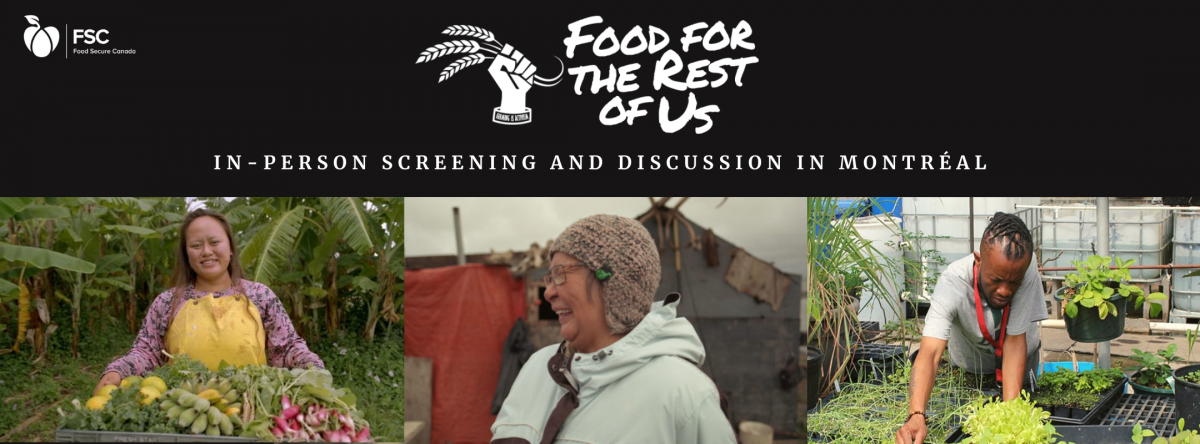On May 25, Food Secure Canada hosted a screening of the documentary film Food for the Rest of Us at Cinéma Public in Montréal. Researcher Farzaneh Barak (Fonds De Recherche Du Québec – Société Et Culture, FRQS) shares her thoughts on the discussion and film.
I enjoyed watching Food for the Rest of Us, which framed four different experiences/stories based on a central message. The film echoed Food Secure Canada’s messaging around the importance of including a community’s voice in food security projects/programs. This film clearly showed us how powerful visual methodologies, such as film-making, cellphilm, participatory video, photo, voice, and storytelling, are. These tools are more engaging and encourage people to share their experiences in a more nuanced way and show the reality of their everyday life. This is especially important for marginalized groups, who are traditionally excluded. As we try to work towards the Sustainable Development Goals (SDGs), specifically, SDG 2: Zero hunger, the stories, realities, and struggles of those who are the most affected by injustices in the food system, need to be centralized.
The importance of local contexts, as well as the message that there is no one-size fits all pathway to food justice was also portrayed.; although the film was about issues around food access, agency, and sustainability, we could hear that in each story, people struggled with different challenges, such as lack of infrastructure in remote communities, that were not a challenge for another one in MA’s farmland in Hawaii. This brings us to the interconnected relationship between context and community-based approaches that highlights a community’s specific obstacles.
For those who are interested, here are some community-based cultural and artistic practices towards food justice:
- Multi-university project uses digital literacy to fight discrimination – This is about a new project in Canada that uses digital literacy to fight discrimination. This is precisely about what is needed to be added to food security projects in Canada.
- Hidden Hunger in The West Island – This is also another film documenting the food insecurity experiences of residents in West Island, Montreal.
- Re-visioning Cellphilm Methodologies Virtual Symposium – A two-days symposium at McGill University run by Participatory Culture Lab, for those of you who are interested in learning more about visual participatory methodology.

